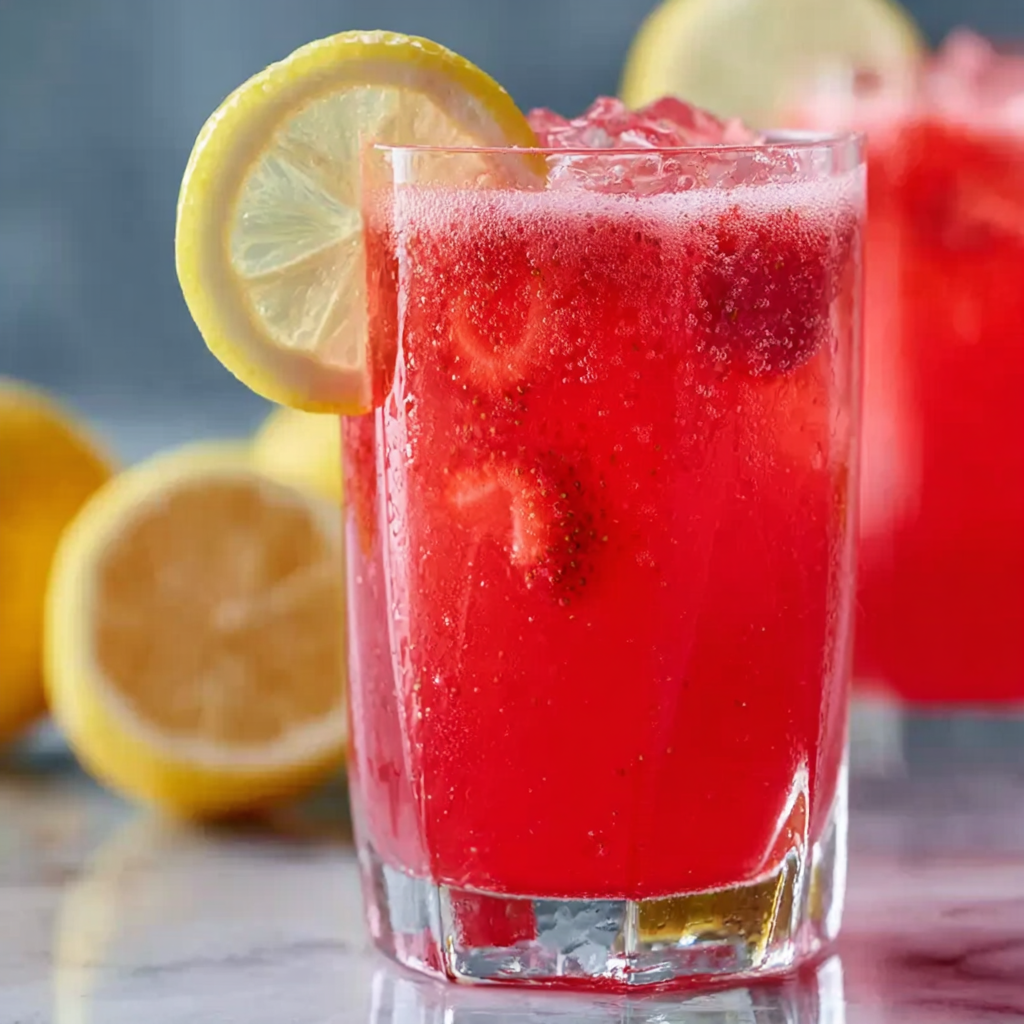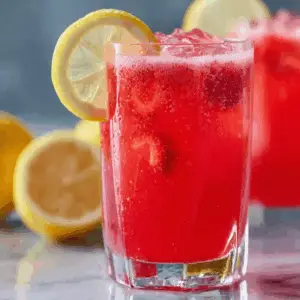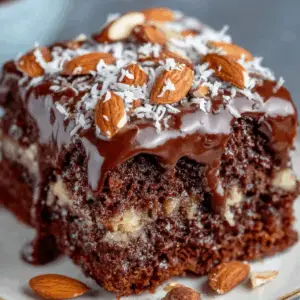As the sun-soaked days of summer approach, few beverages rival the vibrant flavor and cooling effect of fresh strawberry lemonade. This classic refreshment combines the natural sweetness of ripe berries with zesty citrus to create a thirst-quenching drink ideal for outdoor gatherings or quiet afternoons on the porch.
In this comprehensive guide, we’ll explore the origins of this beloved drink, detailing how simple ingredients transform into a luscious concoction. For a deeper dive, see our Brief History of Lemonade and the History of lemonade page. You’ll also discover techniques to craft the perfect balance between tartness and sweetness while incorporating fresh mint or basil for an herbal twist.
Ready in minutes, you’ll learn to make silky strawberry puree using a blender or food processor and master the art of a smooth simple syrup to sweeten naturally. Jump to Key Ingredients and Their Roles to uncover how the choice of Eureka versus Meyer lemons affects acidity and flavor. By the end, you’ll have all the tips needed to impress friends at your next gathering.
Additionally, expect to explore:
- Hydrating properties and antioxidants
- Versatile flavor profiles for all palates
- Tips for achieving the perfect balance
- Creative seasonal presentation and garnish tips
A Brief History of Lemonade and Strawberry Lemonade
The refreshing tradition of lemonade traces back to medieval Egypt, where travelers enjoyed lemon-infused refreshments. By the 13th century, lemonade recipes spread across Europe, adapting to local tastes. Citizens favored simple blends of lemon juice, water and sweetener, establishing the foundation for modern variations. Key milestones include:
- Ancient Egypt: early citrus infusions enjoyed by royalty
- Medieval France: commercialization of lemon beverages
- 17th Century: introduction of sugar enhanced sweetness
- Colonial America: lemonade stands embody entrepreneurial spirit
- 20th Century: commercialization via soda fountains and cafes
Over time, fruit-infused twists emerged, with strawberry lemonade gaining momentum. As strawberries became widely cultivated, innovative beverage makers combined pureed berries with tart citrus to craft a visually appealing and flavorful drink. Discover how fresh strawberries influence flavor in our Key Ingredients and Their Roles section. For more details about berry cultivation, visit the Strawberry page. See recipe variations below.
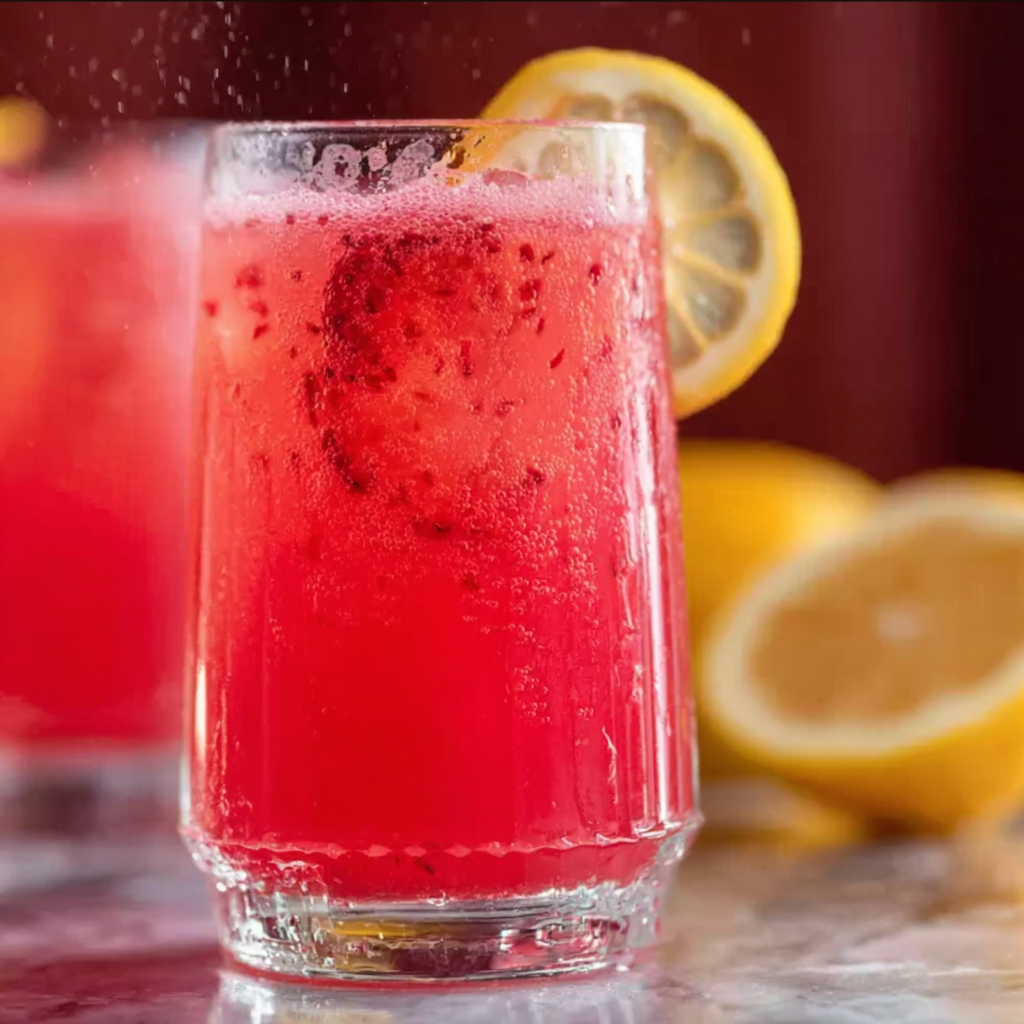
Key Ingredients and Their Roles
Crafting the perfect strawberry lemonade hinges on selecting quality components. Each ingredient contributes to flavor, texture, and visual appeal. Understanding these roles ensures a balanced blend of tangy and sweet that delights the palate.
Fresh Strawberries and Lemons
Ripe strawberries offer sweetness, color. Choose berries that are firm to the touch. For optimal acidity, select Eureka or Meyer lemons, each imparting distinct tasting notes. The acidity level influences overall tartness and freshness. For deeper insight into berry varieties, visit the Strawberry page. Explore Lemon varieties to determine your preferred acidity profile.
Sugar & Simple Syrup
Granulated sugar dissolves unevenly in cold liquids, making simple syrup essential for uniform sweetness. A classic 1:1 ratio of sugar and water yields a smooth sweetener that blends effortlessly. To experiment with flavor, infuse the syrup with herbs or citrus zest. Check our simple syrup recipes on Pinterest for creative twists. For detailed preparation steps, see Making the Perfect Simple Syrup.
Water & Ice
The balance between water and ice determines consistency and dilution. Use filtered water for purity and clear ice cubes to avoid cloudiness. Adjust the ratio to achieve desired strength and chill factor. Excessive water can weaken flavor, while too much ice dilutes quickly.
Optional Flavor-Boosters
- Fresh mint, basil, or thyme for herbal notes
- Sparkling water or soda for effervescence
- Additional fruits like raspberries or peaches for complexity
- A splash of Prosecco or spirits for adult versions
Essential Equipment & Tools
Selecting proper equipment simplifies preparation and ensures quality results. Three main tools are essential:
- Blender or Food Processor: Purées berries smoothly.
- Fine Mesh Sieve/Strainer: Removes seeds for clarity.
- Juicer (Hand or Electric): Extracts lemon juice efficiently.
- Pitcher and Stirring Spoon: Accommodates mixing and serving; see homemade lemonade imagery for presentation ideas.
- Muddler (optional): Infuses herbs like mint.
- Ice Cube Trays: Ensure uniform ice to prevent dilution.
For more details on making the ideal puree, refer to Preparing the Strawberry Puree. Choose clear glassware to showcase color. Ensure all tools are cleaned before use. Avoid cross-contamination by sanitizing regularly between uses.
Making the Perfect Simple Syrup
Creating a smooth simple syrup is essential for achieving balanced sweetness without gritty sugar sediments. By dissolving sugar fully in warm water, you ensure every sip of your strawberry lemonade blends seamlessly, delivering consistent flavor throughout.
To prepare, combine equal parts granulated sugar and water (a classic 1:1 sugar-to-water ratio) in a small saucepan. Heat gently over medium flame, stirring constantly until the sugar dissolves completely—this prevents scorching and maintains clarity. Remove from heat promptly and let cool to room temperature, ensuring the syrup retains its shine and viscosity. For step-by-step guidance on equipment, refer to Essential Equipment & Tools and explore detailed techniques on the simple syrup page for more variations.
Once cooled, transfer the syrup into a clean jar and store in the refrigerator for up to two weeks. Consider herb-infused twists—add mint sprigs, basil leaves, or citrus zest while heating. Check out creative ideas on Pinterest for simple syrup recipes and see how they complement fresh fruit purees in the Preparing the Strawberry Puree section. Proper cooling preserves flavor and prevents bacterial growth, so allow at least 30 minutes before mixing with juice. Use low to medium heat to avoid caramelization, which can alter taste and texture.
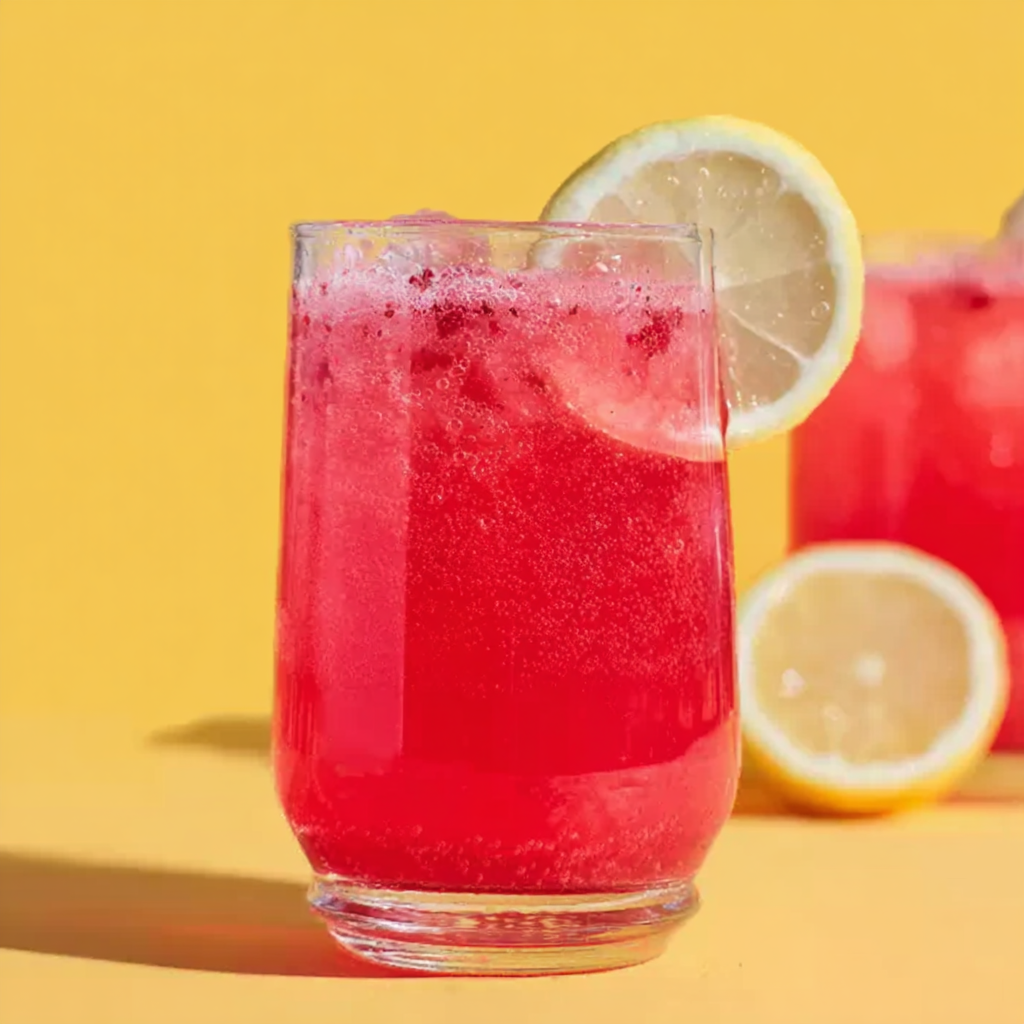
Preparing the Strawberry Puree
Begin by selecting ripe, firm strawberries free of blemishes. Wash thoroughly under cold water to remove debris. Gently pat dry with a paper towel, then remove the green caps and stems. Slice berries into uniform pieces to promote even blending.
Place the sliced fruit into a high-powered blender or food processor. Pulse several times until the mixture resembles a thick sauce. For a rustic texture, transfer the puree directly to a pitcher. For a refined, seed-free drink, pour the mixture through a fine mesh sieve into a bowl, pressing the solids with a spoon to extract every drop of juice. Discard remaining pulp.
If you prefer a thinner consistency, stir in up to ½ cup cold water gradually, tasting until you achieve the desired balance. This technique prevents overdilution and preserves vibrant color. Adjust sweetness by adding cool simple syrup in 1-tablespoon increments until the tartness and sweetness marry perfectly.
Chill the strained puree in the refrigerator for at least 15 minutes to enhance flavor melding. Meanwhile, prepare ice and garnishes. Proper chilling ensures the final blend remains cold without relying on excessive ice, which can water down flavor. Once cooled, the puree is ready for assembly with fresh lemon juice and water, as detailed in Assembling Your Fresh Strawberry Lemonade.
Assembling Your Fresh Strawberry Lemonade
To combine all elements flawlessly, start with the chilled strawberry puree in a large pitcher. Measure 1 cup of lemon juice, freshly squeezed from ripe Eureka or Meyer lemons, and pour directly over the puree. Stir gently to integrate flavors without aerating excessively.
Add 4 cups of cold water, ideally filtered, to avoid off-flavors. At this stage, taste and adjust: if too tart, incorporate extra simple syrup in 1-tablespoon increments; if too sweet, squeeze additional lemon juice. For effervescent appeal, replace up to 1 cup of water with sparkling water, ensuring the bubbles enhance rather than mask fruit notes.
Stir slowly to preserve carbonation. Transfer the lemonade to glasses filled with ice cubes made from filtered water or fruit juice to prevent dilution. Garnish with mint sprigs or basil leaves for herbal aroma. To serve at gatherings, prepare a self-serve station with garnishes displayed on a tray and a pitcher of lemonade encircled by fresh lemon wheels.
For visual inspiration, explore garnish ideas. Hosting tip: pre-chill glasses in the freezer to keep beverages colder longer without additional ice.
Creative Variations & Mix-Ins
Elevate your strawberry lemonade with inventive twists that cater to diverse tastes. For an herbal infusion, muddle fresh mint or basil leaves at the bottom of each glass before pouring the lemonade. The oils release gradually, adding complexity with every sip.
To introduce new fruit flavors, blend equal parts raspberries, peaches, or watermelon with strawberries during the puree stage. This creates layered fruit profiles that pair exceptionally well with citrus. Swap cold water for sparkling water or Prosecco to transform the drink into a light cocktail—perfect for brunches or summer soirées.
For adult-only versions, mix in 1–2 ounces of vodka, gin, or tequila per serving. Combine the spirit of choice with the strawberry puree and lemon juice before chilling. Garnish with a thin slice of strawberry on the rim and a sprig of thyme for an elegant presentation.
Explore fruit-infused refreshment ideas for seasonal inspiration. Remember, adjusting syrup and citrus proportions allows each variation to maintain balanced sweetness and tartness.
Serving Suggestions & Garnishes
Presentation amplifies enjoyment. Choose clear glassware—mason jars or highball glasses—to showcase the vivid pink hue. Consider these enhancement tips:
- Garnish with lemon wheels threaded onto the rim for easy removal and visual appeal.
- Strawberry fans: slice berries partially through, then fan open on the glass edge.
- Herb sprigs: tuck mint or basil between ice cubes for aroma with each sip.
- Fruit ice cubes: freeze small berries or lemon zest in ice trays to infuse flavor as they melt.
Serve on a wooden tray or mirrored surface to reflect colors. Provide reusable straws for eco-friendly charm. For outdoor events, set pitchers on ice-filled buckets to maintain chill without diluting.
Storage, Make-Ahead Tips & Shelf Life
Proper storage preserves flavor and safety. Store unserved lemonade in an airtight pitcher or jar:
- Refrigeration: up to 3–5 days; stir before serving to reincorporate any settled pulp.
- Freezing: portion lemonade into ice cube trays or freezer-safe containers; freeze up to two months. Thaw overnight in the refrigerator and stir before serving.
To make ahead, prepare simple syrup and strawberry puree separately up to two days in advance. Keep refrigerated. On serving day, combine with fresh lemon juice and water for peak freshness. Avoid freezing whole assembled lemonade—expansion can crack glass containers and alter texture.
Troubleshooting Common Issues
Even seasoned hosts encounter hiccups. Address these problems swiftly:
- Too sweet: add more fresh lemon juice in small increments, stirring and tasting between additions.
- Too tart: dissolve additional simple syrup in a small amount of warm water, cool, then stir into the batch.
- Separation: stir vigorously or whisk; for longer stability, whisk in a pinch of food-grade xanthan gum.
- Cloudiness: clarify by chilling and skimming foam; strain through coffee filters if clarity is essential.
- Flat flavor: ensure ingredients are fresh; use filtered water and fresh-squeezed juice rather than bottled alternatives.
Health Benefits & Nutritional Overview
Fresh strawberry lemonade delivers more than flavor:
- Vitamin C: lemons and strawberries boost immune support.
- Antioxidants: anthocyanins in berries combat oxidative stress.
- Hydration: water content replenishes fluids efficiently.
- Calorie control: adjust sugar levels or substitute with honey or agave for lower glycemic impact.
Monitor portion sizes to balance enjoyment with dietary goals. For sugar reduction, replace half the granulated sugar with a natural sweetener like stevia.
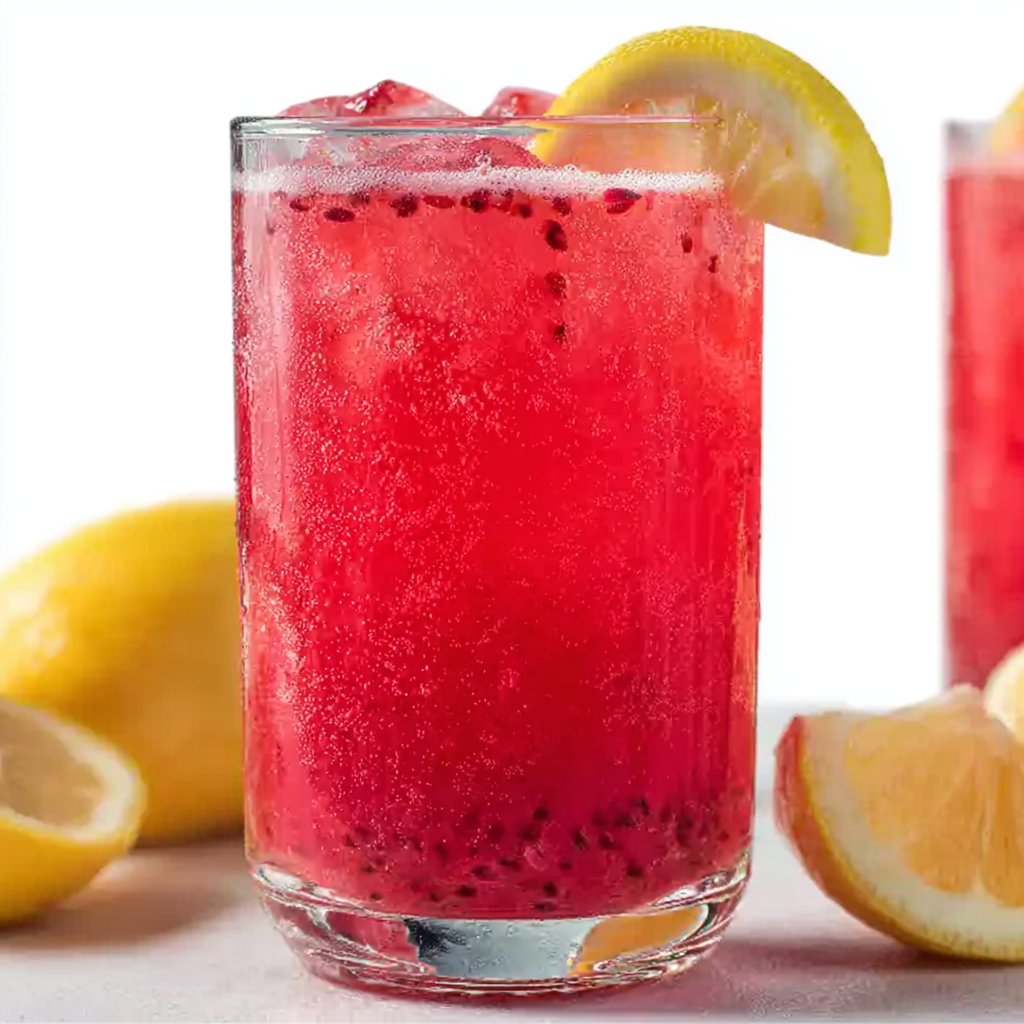
Frequently Asked Questions (FAQs)
- How long does homemade strawberry lemonade last?
Store refrigerated in an airtight container for 3–5 days; stir before serving. - Can I use frozen strawberries?
Yes. Thaw and drain excess water before pureeing to avoid dilution. - What’s the best way to reduce sweetness?
Add fresh lemon juice gradually until the desired tartness is reached. - How do I prevent separation?
Stir well before serving or whisk in a pinch of xanthan gum for stability. - Is this recipe gluten- or dairy-free?
Yes. All ingredients are naturally gluten- and dairy-free.
The Ultimate Guide to Perfect Fresh Strawberry Lemonade
This Easy Fresh Strawberry Lemonade recipe yields a vibrant, tangy-sweet beverage that celebrates peak summer produce. Purée ripe strawberries into a silky base, balance with freshly squeezed lemon juice, then sweeten using homemade simple syrup. The result is a beautifully colored drink bursting with antioxidant-rich berries and zesty citrus.
Ingredients
- 1 pint (about 2 cups) fresh strawberries, hulled and sliced
- 1 cup granulated sugar
- 1 cup water (for simple syrup)
- 1 cup fresh lemon juice (about 4–6 lemons)
- 4 cups cold water
- Ice cubes
- Lemon slices and whole strawberries, for garnish
Instructions
• In a small saucepan, combine the sugar and 1 cup water. Bring to a gentle simmer over medium heat, stirring until the sugar dissolves completely. Remove from heat and let the simple syrup cool to room temperature.
• Meanwhile, place the sliced strawberries in a blender or food processor and puree until smooth. If you prefer a smoother drink, strain the puree through a fine mesh sieve into a pitcher, pressing on the solids to extract as much liquid as possible; otherwise, pour it in directly for a more rustic texture.
• To the pitcher, add the cooled simple syrup, lemon juice, and 4 cups of cold water. Stir thoroughly to combine.
• Taste and adjust: if it’s too sweet, add more lemon juice; if too tart, stir in a bit more water or simple syrup.
• Cover and refrigerate for at least 1 hour to let the flavors meld and the drink chill.
• When ready to serve, fill glasses with ice, pour in the strawberry lemonade, and garnish each with a lemon slice and a whole strawberry.
Notes
-
For seedless clarity, strain the puree through a fine mesh sieve.
-
Adjust dilution by varying water or ice cube ratios to prevent flavor loss.
-
Experiment with herb infusions—mint, basil, or thyme—to add aromatic depth.
-
Use fruit-infused ice cubes to maintain flavor as the ice melts.
-
Make simple syrup up to two weeks in advance; store refrigerated in a sealed jar.
-
Serve in pre-chilled glasses to keep the lemonade cold without over-diluting.
